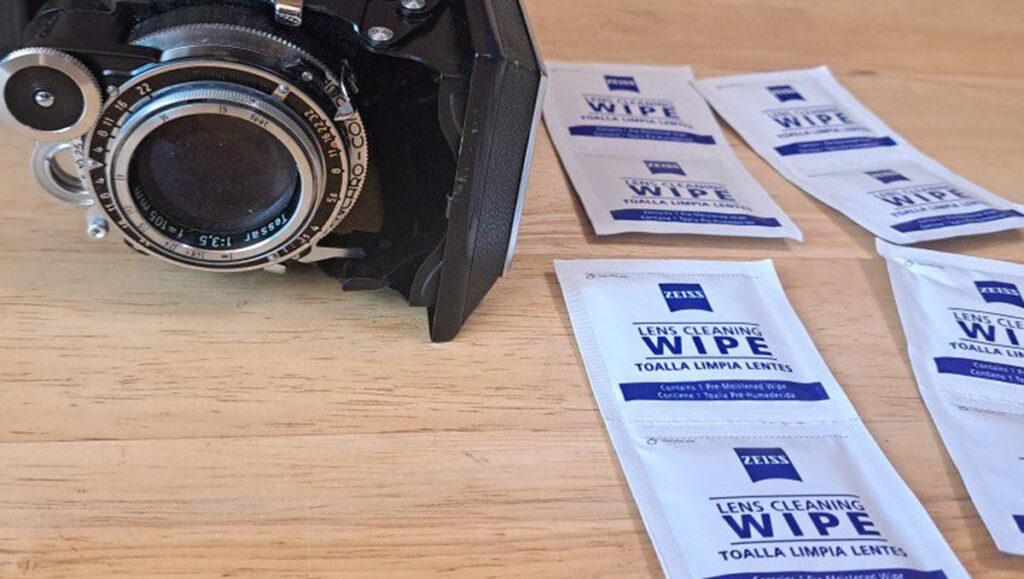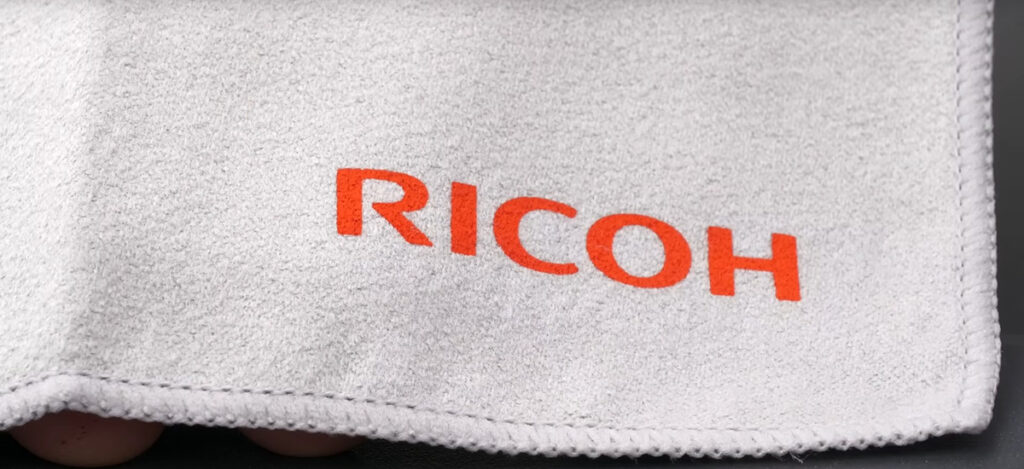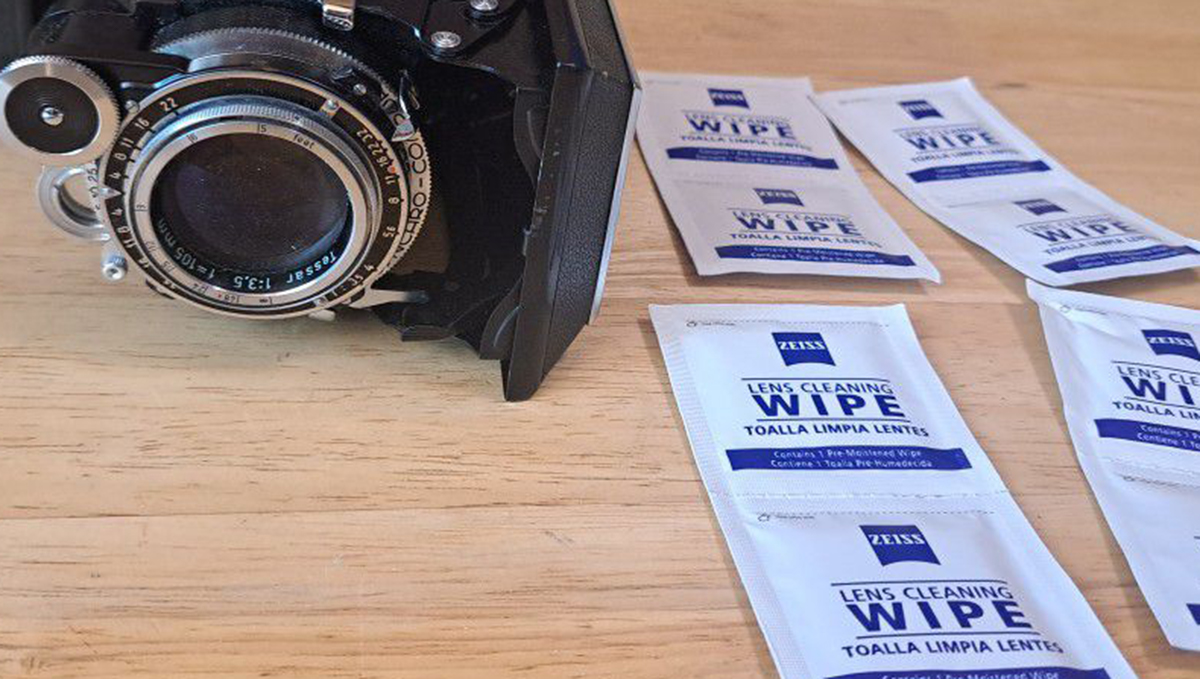Camera lens wipes are an indispensable accessory for photographers who are serious about maintaining the clarity and quality of their images.
These specialized cleaning tools are designed to keep lenses free of dust, smudges, and fingerprints that can compromise picture quality.
This article will discuss the safety of lens wipes for camera lenses, offer guidance on what to wipe a camera lens with, and provide in-depth information on selecting, using, and maintaining camera lens wipes.
By the end of this article, you will be well-equipped to choose the right lens wipes for your camera and use them effectively.

The Importance of Clean Camera Lenses
A clean camera lens is crucial for capturing sharp, high-quality images. Dust, smudges, and fingerprints can degrade image quality, introducing artifacts, reducing contrast, or softening the focus.
Related Content: How To Clean The Lens of a Camera
A well-maintained lens not only produces better images but also extends the life of your equipment by reducing the risk of scratches or other damage.
Regularly cleaning your camera lenses is an essential part of proper camera maintenance.
In addition to impacting image quality, dirty lenses can also cause issues with autofocus systems.
Dust and debris can interfere with the camera’s ability to focus accurately, leading to blurry or out-of-focus images.
Keeping your lenses clean helps ensure that your camera’s autofocus system functions optimally.
Are Lens Wipes Safe for Camera Lenses?
The safety of lens wipes for camera lenses is a concern for many photographers.
Many camera lenses feature delicate coatings that can be damaged by harsh chemicals or abrasive materials.
However, when used correctly, lens wipes can be a safe and effective way to clean your camera lenses. The key is to choose lens wipes safe for camera lenses and to follow proper cleaning techniques, which we will discuss later in this article.
Lens coatings, such as anti-reflective and anti-scratch coatings, are engineered to improve light transmission, reduce glare, and protect the lens from damage.
Using inappropriate cleaning methods or materials can damage these coatings, compromising their effectiveness and potentially affecting image quality. It’s essential to select lens wipes and cleaning solutions that are safe for use on coated lenses.
Please don’t use Windex!
What Do You Wipe a Camera Lens with?
There are several options available when it comes to wiping a camera lens. Some of the most common options include:
a. Microfiber cloth: A soft, lint-free microfiber cloth is a popular choice for cleaning camera lenses. These cloths are gentle on lens coatings and can effectively remove dust, smudges, and fingerprints without scratching the lens.
High-quality microfiber cloths can be washed and reused, making them an economical choice for photographers.

b. Lens tissue: Lens tissue is another option for cleaning camera lenses. These disposable, lint-free tissues are designed to be used with a cleaning solution and can help remove stubborn debris or smudges from your lens.
Lens tissues are particularly useful for photographers who prefer a single-use option or who want to make sure they are using a clean wipe to start with.
c. Pre-moistened lens wipes: Pre-moistened lens wipes are convenient, disposable wipes that come pre-saturated with a cleaning solution.
These wipes are specifically designed for camera lenses and are safe for use on delicate lens coatings.
Pre-moistened lens wipes are ideal for photographers on the go or those who want a hassle-free cleaning option.
Choosing the Right Camera Lens Wipes
When selecting camera lens wipes, consider the following factors:
- Material: Choose lens wipes made from soft, lint-free materials, such as microfiber or lens tissue. Avoid using paper towels, tissues, or other abrasive materials that could scratch your lens.
- Cleaning solution: Look for lens wipes that use a cleaning solution specifically designed for camera lenses. These solutions should be alcohol-free and ammonia-free to prevent damage to delicate lens coatings. Some solutions may also include anti-static or anti-fogging properties for added benefits.
- Packaging: Lens wipes should be individually wrapped or come in a resealable package to ensure they remain clean and uncontaminated until you are ready to use them. This is especially important for pre-moistened lens wipes, as they can dry out if not properly sealed.
- Manufacturer’s recommendations: Ensure that the lens wipes you choose are compatible with your specific camera lens or lenses. Some manufacturers may recommend specific cleaning products for their lenses. Always consult your camera or lens manual for cleaning recommendations.
How to Use Camera Lens Wipes
To clean your camera lens using lens wipes, follow these steps:
a. Remove any loose dust or debris from the lens using a blower or soft brush. This is an essential first step to prevent scratches or damage caused by rubbing debris against the lens surface.
b. If using a pre-moistened lens wipe, carefully open the package and remove the wipe. If using lens tissue or a microfiber cloth, apply a small amount of lens cleaning solution to the cloth or tissue. It’s important not to oversaturate the cloth or tissue, as excess cleaning solution can seep into the lens barrel and cause damage.
c. Gently wipe the lens surface in a circular motion, starting from the center and working your way outward. Apply minimal pressure to avoid damaging the lens or its coatings.
d. If necessary, use a dry section of the cloth or tissue to remove any remaining cleaning solution or residue.
e. Inspect the lens for any remaining smudges or debris. If needed, repeat the cleaning process.
f. Allow the lens to air dry before reattaching the lens cap or using the camera. This helps prevent the trapping of moisture, which can cause fogging or other issues.
Common Mistakes to Avoid When Using Lens Wipes
To prevent damage to your camera lenses when using lens wipes, be sure to avoid these common mistakes:
Using harsh chemicals: Avoid using lens wipes that contain alcohol, ammonia, or other harsh chemicals that could damage lens coatings.
Applying too much pressure: When wiping the lens, use gentle pressure to avoid scratching or damaging the lens surface.
Wiping with dirty or contaminated materials: Always use a clean, lint-free cloth or tissue to clean your lenses. Never reuse dirty or contaminated lens wipes, as this could introduce debris or contaminants onto the lens surface.
Neglecting to remove loose dust or debris before wiping: Always remove any loose dust or debris from the lens using a blower or soft brush before using lens wipes. This will prevent scratches or damage caused by rubbing debris against the lens surface.
Tips for Maintaining Your Camera Lenses
In addition to using camera lens wipes to keep your lenses clean, follow these tips to help maintain the overall health and performance of your camera lenses:
a. Use lens caps: Always use lens caps when your camera is not in use. This will help protect the lens from dust, debris, and potential damage.
b. Store your camera equipment properly: Keep your camera and lenses in a clean, dry environment, preferably in a padded camera bag or case. This will help protect your equipment from moisture, dust, and potential damage.
c. Avoid touching the lens surface: Minimize direct contact with the lens surface by holding the camera by its body or lens barrel. This will help prevent smudges and fingerprints on the lens.
d. Regularly inspect your lenses: Make it a habit to regularly inspect your lenses for dust, smudges, or other debris. This will help ensure that your camera is always ready to capture high-quality images.
e. Clean your lenses as needed: Don’t wait for your lenses to become noticeably dirty before cleaning them. Regular cleaning can prevent the buildup of debris and contaminants, making it easier to maintain your lenses in top condition.
Alternative Cleaning Methods for Camera Lenses
While lens wipes are an excellent option for cleaning camera lenses, there are also alternative cleaning methods to consider:
a. Lens cleaning pen: A lens cleaning pen features a soft, retractable brush on one end for removing dust and debris, and a flat cleaning tip on the other end for removing smudges and fingerprints. This compact tool is convenient for photographers on the go.
b. Ultrasonic lens cleaner: This isn’t available on today’s cameras, but I think it’s coming in the future.
Ultrasonic lens cleaners use high-frequency sound waves to remove dust, debris, and contaminants from the lens surface.
Frequently Asked Questions About Lens Wipes
Can I reuse lens wipes?
While some lens wipes, such as microfiber cloths, can be washed and reused, other types, like pre-moistened wipes and lens tissues, are designed for single use only. Always follow the manufacturer’s recommendations for use and disposal.
What should I do if I accidentally use a lens wipe with harsh chemicals on my camera lens?
If you’ve used a lens wipe with alcohol, ammonia, or other harsh chemicals on your lens, immediately clean the lens with an appropriate lens cleaning solution and a soft, lint-free cloth or tissue to remove any residue.
Inspect the lens for any signs of damage to the coatings and consult your camera repair specialist for further guidance.
Conclusion
Camera lens wipes are a safe and effective way to clean your camera lenses when used correctly.
By choosing the right lens wipes, following proper cleaning techniques, and practicing regular lens maintenance, you can keep your camera lenses in optimal condition and ensure that your photographs are always sharp and clear.
Understanding the role of lens wipes in different photographic environments and being aware of alternative cleaning methods can also help you maintain the cleanliness of your lenses in various situations.
As a photographer, investing in high-quality lens wipes and learning how to use them correctly is an essential aspect of preserving the integrity of your camera equipment and maximizing the quality of your images.
Related Content: The Cost of Quality: Why Are Camera Lenses So Expensive?
With the comprehensive information provided in this article, you are now well-equipped to make informed decisions about the best lens wipes for your needs and to use them effectively to maintain your camera lenses for years to come.

